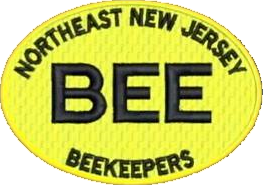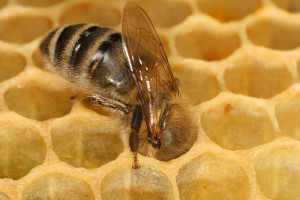John A. Gaut
One topic that seems to be a concern to many beekeepers is laying workers in a colony that appears queenless. Basic Beekeeping classes teach that once a colony is queenless and broodless, laying workers will develop. Once laying workers develop, it is very difficult to requeen the colony and it becomes “hopelessly queenless.” The colony will raise drones from the unfertilized eggs of the laying workers as long as they have resources and the nurse bees. (This is the only way a queenless colony can pass along its genes to the next generation.) The colony will continue to dwindle until it dies. Beekeepers want to prevent this scenario!
If a colony swarms or supercedes the queen, the new queen must mature and mate before laying eggs. In the meantime any brood is maturing and emerging. The colony could be broodless for a few days to over a week until a new queen starts to lay. It is during this time a beekeeper may think the colony is queenless and believes they need to introduce a new queen. They should wait for a few days though. If a new laying queen (with her big abdomen) is introduced, the younger more agile queen will very likely kill her.
If the beekeeper has a “resource nuc” or another strong colony, they could take a frame of brood with eggs, larva and capped brood (but no queen!) and put it in the suspected queenless colony. If the colony is truly queenless, the colony will raise a queen from a young larva. Otherwise the frame of brood helps reinforce the colony population. Every beekeeper should have a nuc or two to support the honey producing colonies.
So how long can a colony be queenless and broodless before laying workers develop?
Actually, there are always a few (1 in 10,000) laying workers in a colony. There are other workers that “police” the egg laying of these laying workers by removing most of the eggs. (Some eggs do survive in queen right colonies in the drone cells!)
All workers have ovaries. Most are not developed or very underdeveloped. Workers cannot mate so any eggs they lay are unfertilized and will be male drones. Both the queen pheromones and the pheromones from the brood suppress the development of ovaries in the workers. (Based on my observations with queen rearing, the brood pheromone seems like it is the major factor in suppressing the ovary development.) As the brood pheromone decreases due to decreasing brood population, more young workers (4 to 8 days old) develop functional ovaries. Also, less policing occurs. Once a colony is queenless and broodless for a few weeks, there could be a hundred or more laying workers in a colony! They look like any other worker though. (Laying workers may have a slightly larger abdomen; so do workers with a large nectar load in the honey stomach.)
How do you deal with laying workers?
The method of shaking the bees off the frames over 100 feet from the hive has never worked for me (or many other beekeepers). All the bees including the laying workers seem to be able to fly back to the hive. (Most of the bees are back at the hive location before I can get back there with the empty frames!)
Another option is to put frames of brood in the colony. If the laying workers have not developed too much, frames of brood (3 or more) often “shuts down” the laying workers. The colony may raise a queen from young larva on the frame. Or a queen can be introduced a few days later in between these frames of brood; that is still risky for the new queen though. Laying workers produce pheromones similar to a queen, making the colony think they have a queen resulting in the death of any introduced queens.
Many beekeepers place the laying worker colony over a strong queen right colony with a queen excluder in between and maybe a sheet of newspaper too. The pheromones from the queen and brood below the queen excluder help shut down the laying workers and increase policing. After a week or two, the queen excluder can be removed and the combined colony can be inspected to verify it is still queen right. (There is a small risk to this queen too!)
Some beekeepers say the workers move eggs or larva! The beekeepers did not actually witness the event, they only observed eggs above a queen excluder for example. A much more likely explanation for eggs in an area of the hive where there is no queen is laying workers. Laying workers will lay in any cell; drone cells, worker cells and even queen cells. Typically, there are multiple eggs; extra larva is “culled” once the eggs hatch. All these eggs will develop into drones, including the eggs in worker cells and queen cells. The queen cells with drones will look small and not shaped like a normal queen cell.
Most colonies successfully requeen themselves and do not develop laying workers. The few days before the new queen begins laying can challenge the beekeeper’s skills to be patient! Once the new queen has been laying, evaluate the brood pattern. If the new queen is not laying well or the colony becomes too defensive with her new genetics (she may have mated with some very defensive drones), consider requeening. Requeening is much more successful in a colony that has brood and is queen right.

Northeast New Jersey Beekeepers Association
A division of New Jersey Beekeepers Association
